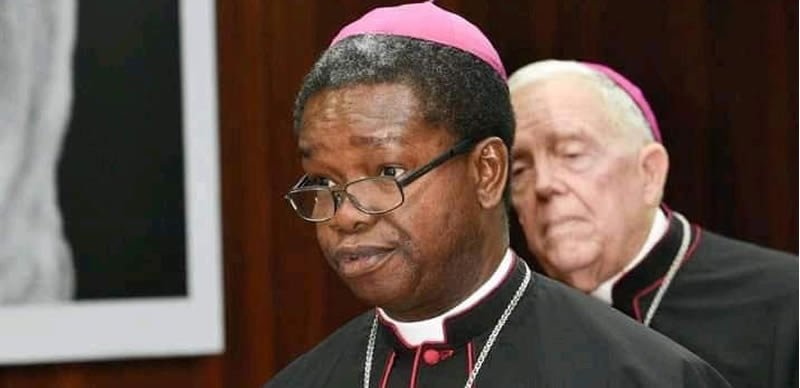
Archbishop Nwachukwu has recently offered a profound and timely reflection on the current state of the Church’s missionary life, describing our age as the “Church of the Sheaves.” Drawing inspiration from Psalm 126, he interprets the sacrifices of Western missionaries as the seeds sown “in tears,” which today bear abundant fruit in the vibrant churches of Africa, Asia, Oceania, the Caribbean, and Latin America. These churches now “return with sheaves,” offering their vocations, their priests, and their joyful faith back to the universal Church.
This imagery is not only biblical but also deeply theological, offering a roadmap for a new development in the Church’s missionary effort—namely, the balanced distribution of priests and missionary resources across the global Church.
This reflection seeks to explore Archbishop Nwachukwu’s vision of the “Church of the Sheaves” as a call to renewed missionary reciprocity and communion within the Body of Christ. It examines the biblical roots of this metaphor, its theological resonance with the Second Vatican Council, and its pastoral implications for the global distribution of priests and resources. By engaging both conciliar teaching and contemporary papal thought, the essay highlights how this vision challenges the Church to move beyond old missionary models toward a dynamic exchange of faith and service between the North and South, the giver and receiver, the sower and the reaper.
Mission and Reciprocity in the Life of the Church
The Second Vatican Council’s decree Ad Gentes reminds us that the missionary activity of the Church is nothing less than the continuation of the very mission of Christ, “the light of the nations” (Ad Gentes, 2). For centuries, this mission flowed primarily from Europe and North America to the rest of the world. Missionaries left behind homeland, comfort, and security, often with no hope of return. Their faith-filled sacrifices, offered in tears, were not in vain.
Today, the ecclesial landscape has undergone significant shifts. The once “mission territories” of Africa, Asia, and Latin America now constitute some of the most dynamic and growing centers of Catholicism. The Council itself anticipated this development when it noted that “the younger churches, rooted in Christ and built on the foundation of the apostles, take on their own maturity” (Ad Gentes, 6).
Archbishop Nwachukwu’s “Church of the Sheaves” captures this dynamic of reciprocity. Mission is no longer a one-way path; it is a mutual exchange of gifts within the communion of the universal Church. As Lumen Gentium affirms, “the universal Church exists in and out of the particular churches” (Lumen Gentium, 23). Thus, the vitality of one part enriches the whole Body of Christ.
In the light of this vision, renewed missionary cooperation must not be understood as a one-way movement of assistance but as a true communion of gifts. Part four of the Final Document of the Synod on Synodality (no. 120) highlights that the exchange of gifts and the sharing of resources among local Churches belonging to different regions fosters the unity of the Church, creating bonds between the Christian communities involved. It stresses the need to ensure that priests who come to the aid of Churches in need do not merely provide a functional solution but become a resource for the growth of both the sending and receiving Churches. This perspective deepens our understanding of missionary cooperation as mutual enrichment rather than dependency, reflecting the living communion of the Body of Christ.
The Urgency of Redistributing Priests
The archbishop’s call for a more just and missionary distribution of priests directly addresses an ecclesial imbalance. While many Western dioceses struggle with declining vocations and an aging clergy, churches in Africa and Asia often experience abundant vocations but face their own pastoral challenges due to high priest-to-faithful ratios.
Presbyterorum Ordinis, the decree on the ministry and life of priests, directly anticipated this situation: “Priests should remember that they must have at heart the solicitude of all the churches. Hence, priests should be willing to go over to other dioceses or missions, whether in their own country or abroad, whenever the need of the Church requires it” (Presbyterorum Ordinis, 10).
This universal solicitude for the Church is the theological foundation of Archbishop Nwachukwu’s proposal. Just as Western churches once shared their priests with mission territories, so now the young churches are called to share their surplus vocations for the good of the whole Church. This is not exploitation but reciprocity, not dependency but communion.
Reception Centers as a Practical Ecclesiology of Communion
A central element of Archbishop Nwachukwu’s proposal is the establishment of regional missionary reception and formation centers in the West. These centers would prepare incoming priests from the Global South through language immersion, cultural orientation, and pastoral formation before assigning them to parishes.
This proposal aligns with Ad Gentes, which emphasizes that missionaries must be well-prepared to understand the cultures they serve, “so that they may be able to enter into the mentality of different peoples” (Ad Gentes, 26). It also echoes Pope Francis’ synodal vision, which emphasizes communion, participation, and mission. Communion means journeying together, participation implies the inclusion of all the faithful, and mission means sending forth. Welcoming priests from Africa and Asia into the West requires all three: journeying together as one Church, integrating all voices, and remaining faithful to the missionary mandate.
These reception centers would embody synodality in practice. They would allow priests from the South to feel welcomed and accompanied, while also preparing Western communities to receive them as brothers and collaborators, not as outsiders or hired labourers. In this way, xenophobia, prejudice, and misunderstandings could be transformed into genuine communion.
Overcoming Childishness and Embracing Childlikeness
Archbishop Nwachukwu also points to a challenge within the younger churches: the temptation to remain “childish” rather than “childlike.” Here again, the Council offers guidance. Ad Gentes insists that young churches must mature in faith, catechesis, and self-sufficiency (Ad Gentes, 15). Sending priests abroad must not be motivated by financial interest or dependency but by missionary zeal and solidarity.
Thus, while the “Church of the Sheaves” emphasizes sharing priests, it also challenges younger churches to embrace a mentality of self-sustenance and responsible stewardship. This is what it means to be childlike—trustful and humble—without remaining childish, dependent, or immature.
Toward a New Development in Missionary Cooperation
Ultimately, Archbishop Nwachukwu’s proposal is not a nostalgic return to old missionary paradigms, but rather the beginning of a new stage of missionary cooperation envisioned by Vatican II. The Council prophetically foresaw a global Church in which all local churches would contribute to the mission according to their gifts.
The “Church of the Sheaves” is a theological metaphor for this new stage: the seeds sown in tears by Western missionaries have borne fruit; the harvest is abundant in the young churches, and the sheaves must now be shared across the Body of Christ.
This development represents the maturity of Vatican II’s vision of mission: a Church that is truly Catholic, where no local church is self-sufficient, and where each shares its gifts in reciprocity and communion.
As Pope Francis reminds us in Evangelii Gaudium: “The joy of the Gospel is for all people: no one can be excluded. That is what the angel proclaimed to the shepherds in Bethlehem: ‘Be not afraid; for behold, I bring you good news of a great joy which will come to all the people’ (Lk 2:10)” (Evangelii Gaudium, 23).
In this light, Pope Leo XIV’s homily on the occasion of the Jubilee of the Missionary World and Jubilee of Migrants beautifully captures the spirit of Archbishop Nwachukwu’s vision. The Pope called for renewed missionary cooperation among the Churches, urging that the communities of the ancient Christian tradition, especially those in the West, should regard the growing presence of brothers and sisters from the Global South as a providential opportunity. This exchange, he notes, can renew the face of the Church and foster a Christianity that is more open, vibrant, and dynamic.
These words of Pope Leo XIV give pastoral depth to the image of the “Church of the Sheaves.” They affirm that the missionary movement of our time must be reciprocal, respectful, and rooted in communion. Such reciprocity marks a new kairos in the life of the Church, an era in which mission is no longer a one-way journey but a shared pilgrimage of faith, love, and witness. The “Church of the Sheaves” thus stands as a prophetic image of global unity: a Church that gathers, gives, and grows together—sowing in hope and reaping with joy until the Lord of the harvest comes again.



